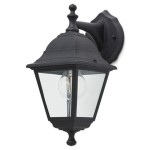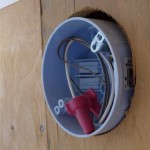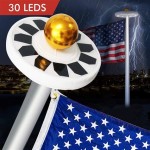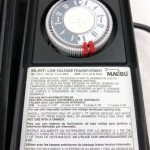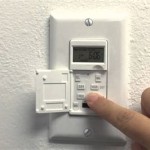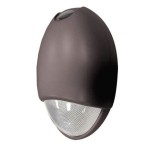Solar Powered Outdoor Light Batteries
Solar-powered outdoor lights offer a convenient and eco-friendly way to illuminate pathways, gardens, and other outdoor spaces. A crucial component of these lighting systems is the rechargeable battery, responsible for storing the solar energy collected during the day and powering the light after sunset. Understanding the different types of batteries used in solar lights, their lifespans, and proper maintenance practices is essential for maximizing the performance and longevity of these outdoor lighting solutions.
Battery Types
Several battery chemistries are commonly employed in solar-powered outdoor lights, each with its own advantages and disadvantages. Nickel-cadmium (NiCd) batteries were once prevalent but are now less common due to environmental concerns related to cadmium. Nickel-metal hydride (NiMH) batteries offer a higher energy density than NiCd, allowing for smaller battery sizes and longer runtimes. Lithium-ion (Li-ion) batteries are increasingly popular due to their even higher energy density, longer lifespan, and improved performance in a wider range of temperatures. Lead-acid batteries are also utilized in some solar lighting applications, particularly larger systems, due to their relatively low cost and ability to handle higher currents.
The choice of battery chemistry significantly impacts the overall performance and lifespan of the solar light. Li-ion batteries generally offer the best performance and longevity, while NiMH provides a good balance between cost and performance. The specific requirements of the lighting application, such as runtime, brightness, and operating temperature range, should be considered when selecting the appropriate battery type.
Battery Lifespan and Replacement
The lifespan of a solar light battery varies depending on the battery chemistry, usage patterns, and environmental conditions. NiCd batteries typically last for a few hundred charge cycles, while NiMH batteries can last for 500-1000 cycles. Li-ion batteries generally offer the longest lifespan, often exceeding 1000 charge cycles. Extreme temperatures, both hot and cold, can negatively impact battery performance and shorten lifespan. Properly maintaining the batteries, including avoiding deep discharges and overcharging, can help maximize their lifespan.
When a solar light battery reaches the end of its lifespan, it will no longer hold a charge effectively, resulting in diminished light output or no light at all. In many cases, the battery can be replaced, allowing the solar light to continue functioning. Some solar lights are designed for easy battery replacement, while others may require more involved disassembly. When replacing a battery, it is important to choose a replacement battery with the correct specifications, including voltage, capacity (measured in milliampere-hours or mAh), and size.
Battery Maintenance and Optimization
Proper maintenance practices can significantly extend the lifespan and performance of solar light batteries. Keeping the solar panel clean ensures optimal charging efficiency. Dust, dirt, and debris can obstruct sunlight from reaching the panel, reducing the amount of energy generated and stored in the battery. Regularly cleaning the solar panel with a soft cloth and water can help maximize charging performance.
Avoiding deep discharges, where the battery is completely drained of power, can also help prolong its lifespan. Deep discharges can stress the battery and reduce its overall capacity. If a solar light is not used for an extended period, it is advisable to store it in a charged state to prevent deep discharge and potential damage to the battery. Similarly, overcharging can also damage the battery. Most solar lights have built-in charge controllers to prevent overcharging, but ensuring the light is not exposed to continuous direct sunlight during storage can further protect the battery.
Proper placement of the solar light is crucial for maximizing sunlight exposure and charging efficiency. The solar panel should be positioned in a location that receives direct sunlight for several hours each day, ideally facing south (in the northern hemisphere) or north (in the southern hemisphere). Obstacles such as trees, buildings, or other structures should be avoided to ensure optimal sunlight exposure.
Understanding the characteristics and maintenance requirements of solar light batteries is essential for maximizing their performance and longevity. By selecting the appropriate battery type, practicing proper maintenance, and optimizing placement for sunlight exposure, users can ensure their solar lights provide reliable and sustainable illumination for years to come.

Battery Powered Solar Led Garden Lamp Decorative Outdoor Lighting China Light Grow Made In Com

How To Make Solar Power Outdoor Lights Just Measuring Up

Alpine Corporation 2 3 Aaa Ni Cd Replacement Solar Rechargeable Batteries For Powered Garden Lights Set Of 4 Sla390 The Home Depot

Convert Outdoor Light To Solar 3 Easy Ways With Diagrams Spheral

Solar Lights Outdoor Rechargeable Battery Powered Led Exterior Lighting With Auto On For Home Patio Deck And Driveway By Pure Garden Set Of 4 Com

Alpine Corporation Aaa Ni Cd Replacement Rechargeable Batteries For Solar Powered Garden Lights Set Of 4 Sla388 The Home Depot

Outdoor Garden Solar Powered Triple Cascading Woodland Water Feature Led Light Battery Back Up Diy At B Q

Solar Outdoor Lights Rechargeable Battery Powered Led Exterior Lighting With Auto On Home Patio Backyard And Deck By Pure Garden 8 Pack Target

Sunflower Battery Solar Powered Yard Globe Landscape Garage Lights For Home Outdoor China Light Steet Made In Com

How To Charge Solar Lights For The First Time 12 Smart Ways Solars House
Related Posts
